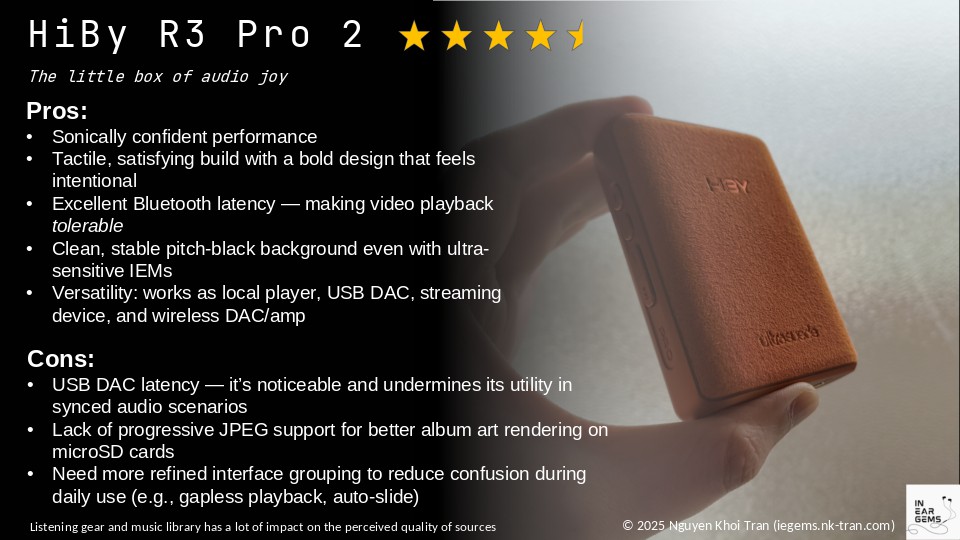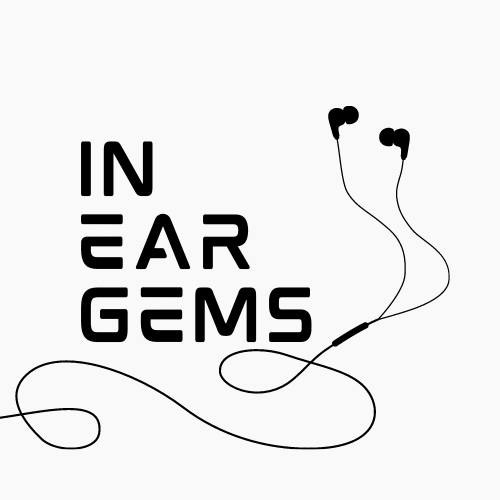HiBY R3 Pro 2 - The little box of audio joy
Another day, another addition to the increasingly bewildering HiBy DAP lineup. This time, it’s a “micro” player called the R3 Pro 2. And before you ask—yes, I know there was an R3II recently. No, this isn’t the same. This is the R3 Pro 2. Definitely don’t confuse it with the R3II 2025, which is just a refresh of the R3II. The R3 Pro 2, on the other hand, is a proper upgrade to the R3II. Why it’s not called the R3III? Your guess is as good as mine. Maybe ask HiBy.
Anyway, let’s stop banging on about names and get to the actual player. Spoiler: it makes more sense than the product line or naming scheme. Roll the intro.
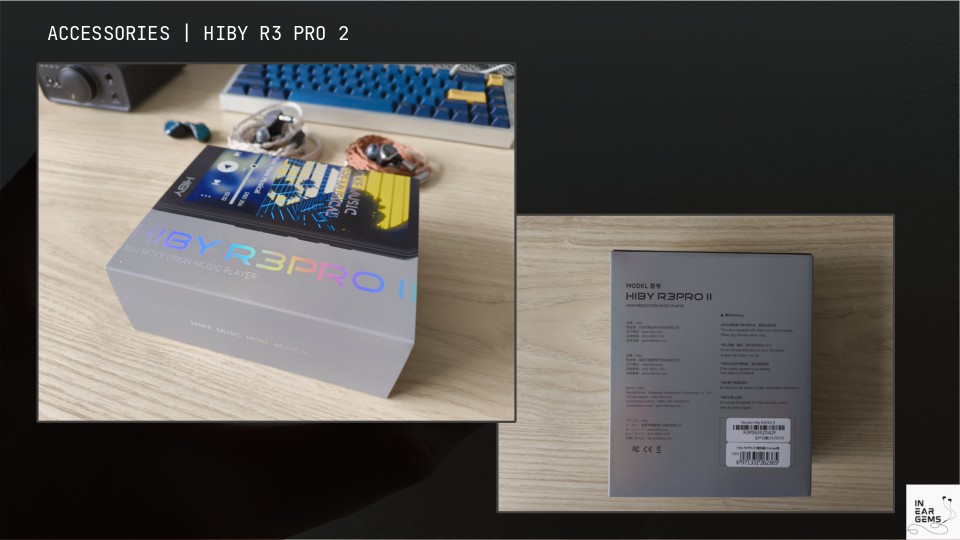
Preambles
- In this review, I use the term “source” to denote a DAC+amp combo for brevity and convenience.
- Sources do not make sounds. Therefore, when I say sources “sound” a certain way, I talk about the change they make to my IEMs and earphones.
- I want my music to be crisp, clear, well-separated and form a 3D soundstage around my head. Sources that intensify those characteristics of my IEMs are considered “better”.
- The unit used for this review was a sample provided by HiBy (Thank you!). The unit is retailed for $199 and can be found on HiBy web store (non-affiliated link).
General Information
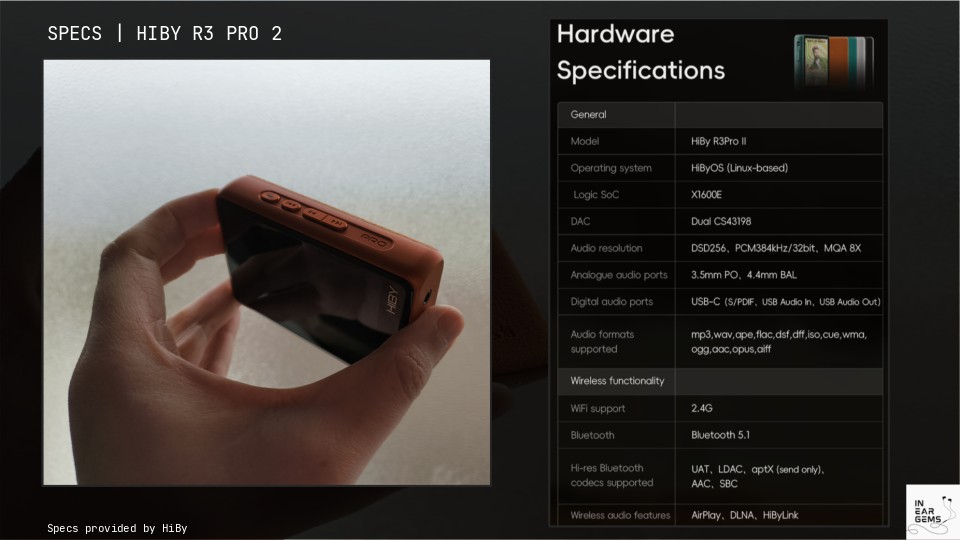
The R3 Pro 2 is a micro DAP. As the label suggests, it’s significantly smaller than your average Android-based DAP. This thing is closer in spirit to the MP3 players of yesteryear: pocketable, unobtrusive, and frankly, a bit of a novelty in a world of 6.8-inch screens. It packs a 3.3-inch touchscreen. Not much to look at, but it’s there. You’ll use it. You’ll curse it. You’ll eventually grow fond of it.
The R3 Pro 2 runs HiBy OS — a custom Linux-based system. HiBy writes the whole shebang themselves: the audio stack, the UI logic, the DSP tricks (and the bugs. Don’t forget the bugs). They’ve done this before (By “this”, of course I mean the software, not the bugs). In fact, if you pick up a random non-Android DAP from China, it’s likely to run a version of HiBy OS. But this time, we have a new OS version that feels a bit different: less familiar, more streamlined, and frankly, a bit less… clunky than the old one on the R3II. The software experience is powered by the new X1600E System-on-Chip (SoC), which promised not only better processing prowess but also better Bluetooth connectivity. We’ll get into how the software feels later.
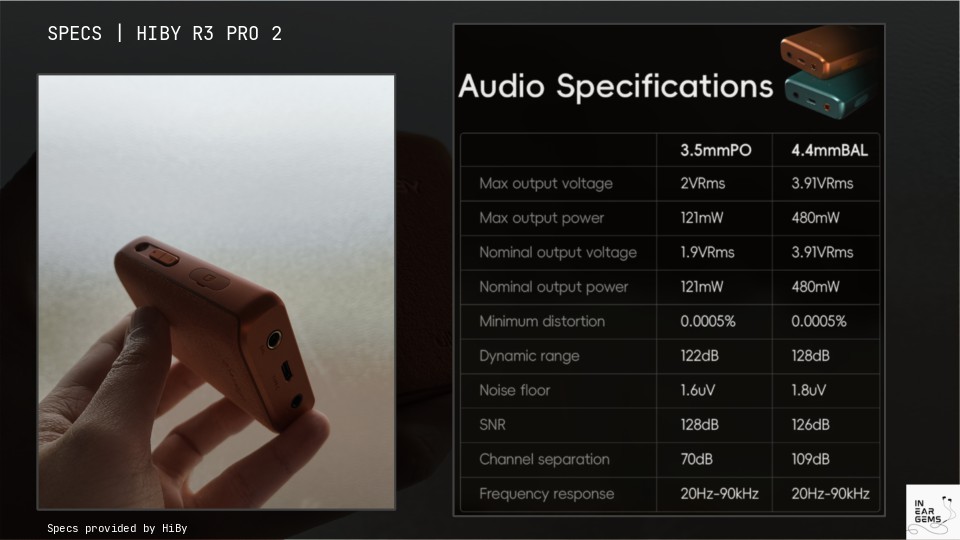
Now, the audio circuitry. You want the familiar? Here it is. Dual CS43198 DACs, those same chips that’ve been showing up in almost every USB DAC you’ve seen in the last few years. On the amp side, we have four OPA1622 opamps. Yes, the same four that power the R6 Pro Max, HiBy’s current sub-flagship DAP. So you’re getting a serious chunk of that DAP’s DNA in a device that’s about a fraction the size (and the price). And, of course, like almost every other “audiophile-class” DAP and DAC, you have two independent clocks. Output-wise, there is no surprise: 3.5mm single-ended and 4.4mm balanced. The USB-C port also support digital data output in case you want to use R3 Pro 2 to drive another DAC.
Before we go any further, let’s take a proper look at the physical design—because, frankly, this thing is a paradox.

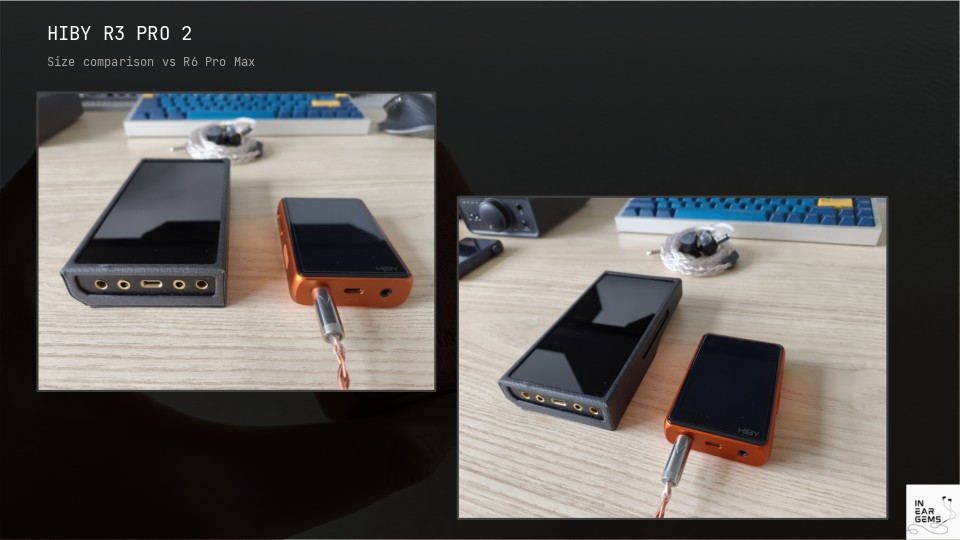
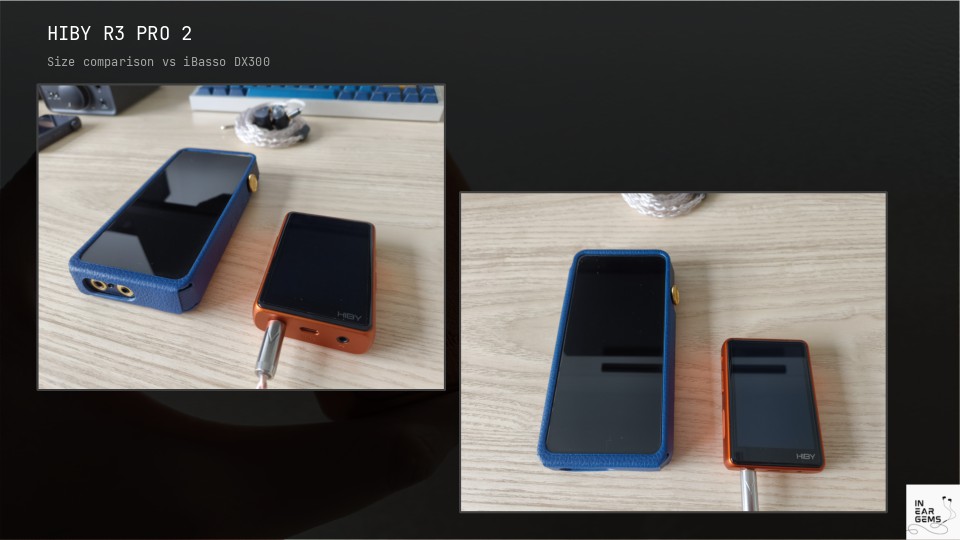
First: despite being micro in size, the R3 Pro 2 is thick. Not just “a bit chunky”—no, this is a proper thicc DAP. Nearly as fat as the iBasso DX300, and roughly 80% the thickness of the already-legendary HiBy R6 Pro Max. I genuinely laughed the first time I pulled it from the box. It looked like a DAP that had been fed too much protein and was now judging your life choices. The frame? Anodised aluminium. Smooth and cool. You’ve got a few colour options to choose from. I went for the orange. It’s not subtle. It’s not understated. In fact, it’s loud. And I love it.
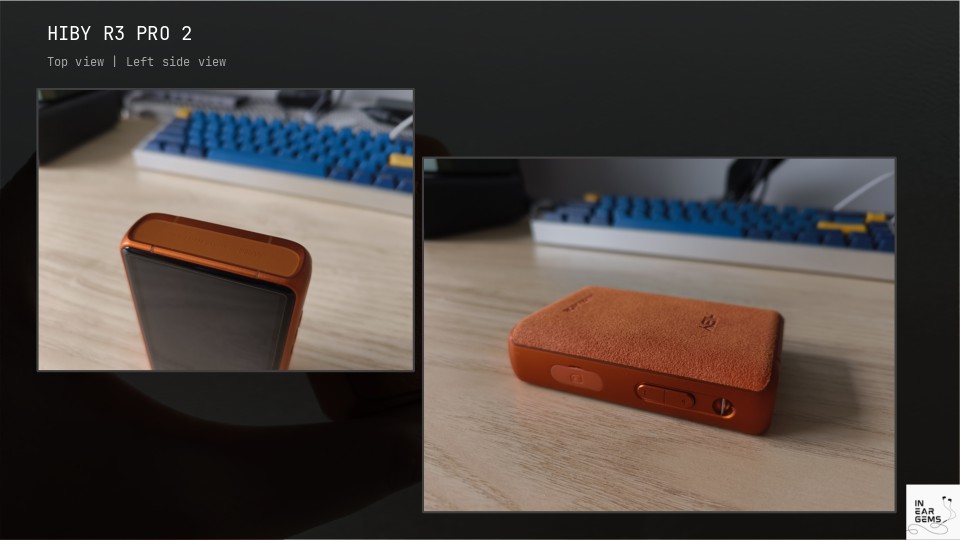
Now, let’s look closely. The top edge, plus a few grooves near the top and around the back? That’s plastic. Not a flaw—just where HiBy hides the Wi-Fi and Bluetooth antennas. Left side: volume buttons (snappy, satisfying), a microSD slot behind a squishy rubber seal, and a tiny lanyard hole. Right side: power button and playback controls nestled in a nicely machined groove, with the word “PRO” carved into the metal like some sorts of badge of honor. Bottom: USB-C flanked by the 3.5mm and 4.4mm sockets. The USB-C connector handles data, charging, and output.
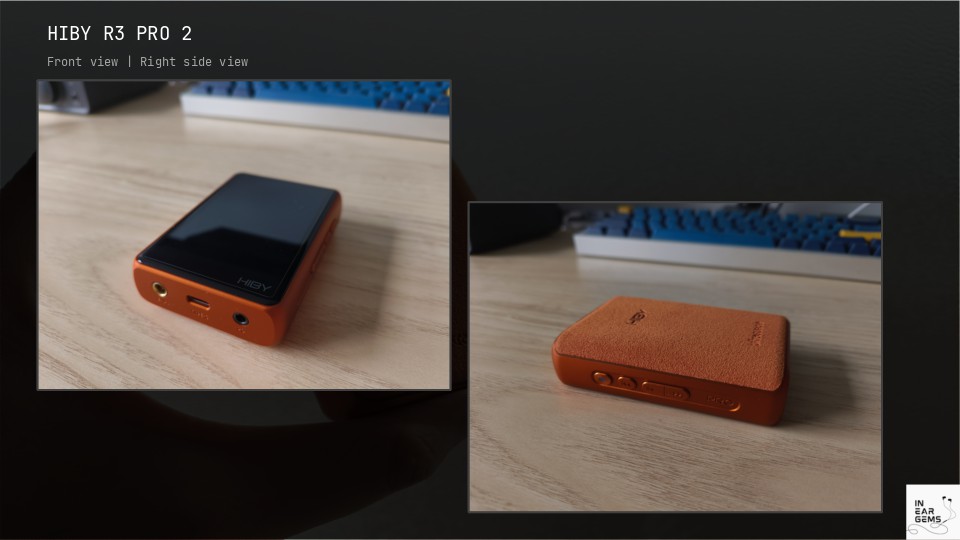
And then there’s the back with the striking Ultrasuede felt plate in the same colour with the metal frame. It’s the signature look HiBy lifted from the R8II, but dialled down for a smaller form factor. The fabric Hiby used is from Toray, not Alcantara like on the R8II. But, you know, tomato, to-mah-toh, since you still have the same softness, the same “I want to pet this” energy. It’s inviting. It’s tactile. It’s nice.
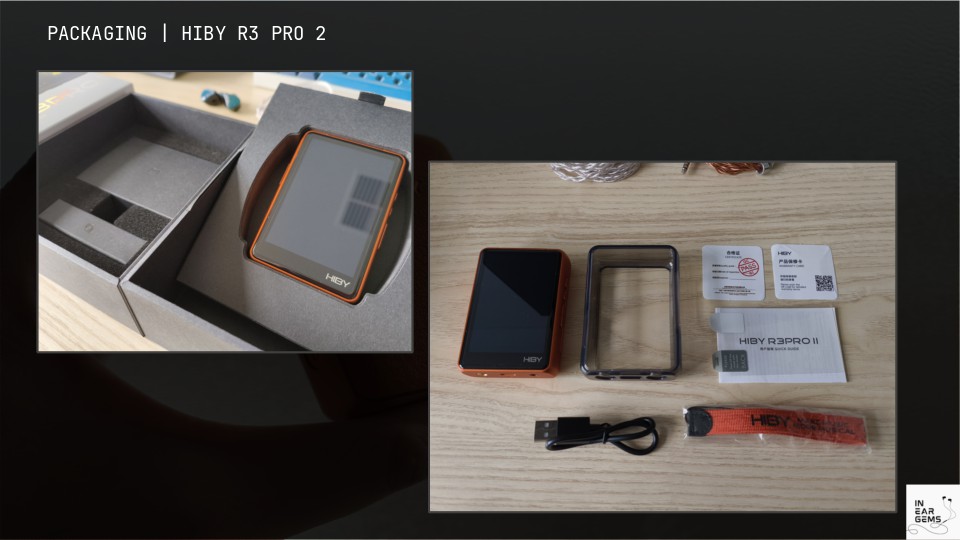
Now, the obvious question: durability. You would be right to concern because high-tech fabric or not, at the end of the day, it’s still your greasy hands against a piece of fuzzy fabric. That said, after weeks of use with no case, no gloves, no ritualistic hand-washing, I’ve seen no wear, no fraying, no discoloration. Even when I accidentally spilled a bit of cleaning spray on it, there were no stains nor blemishes. If you’re nervous about the durability, HiBy’s kind enough to include a plastic case in the box. Or, for the slightly more indulgent, you can buy a proper leather one from them. But honestly? The felt back is one of the best things about this DAP. It makes it feel like something you’d actually want to hold. Therefore, I’m going to live dangerously and use the DAP bare.
Software Functionality and Battery Life
Functionality: Let’s get practical. What can you actually do with this thing? It’s not just a music player. It’s a Swiss Army knife of audio. Here’s the full spread:
- Play your local library from a microSD card. Done. No fuss.
- Stream Tidal or Qobuz directly—yes, the DAP is its own client. No phone, no laptop. It’s… functional. The UI is barebones, but it works. You can browse new releases, check playlists, and listen to your own library on the streaming services. I didn’t test Qobuz, but Tidal worked well enough.
- DLNA streaming from your local media server? Theoretically possible. I didn’t test it—my server wasn’t set up. But the option’s there.
- AirPlay? It connects. That’s all I’ll say. It works. But honestly, it’s easier to just pair your phone via Bluetooth.
- Bluetooth: use it as a wireless DAC/amp for your phone or laptop. Alternatively, you can connect your earbuds to R3 Pro 2 and listen to the audio coming out from the DAP.
- USB-C: plug it into your laptop or PC and it becomes a USB DAC. Or, you can have it digital audio to a separate DAC, essentially turning R3 Pro 2 into a digital transport.
And yes, you can read books on it. I don’t know why. A 3.3-inch screen? For a novel? It’s like trying to read War and Peace on a postage stamp. You’ll finish it, but your eyes would fall off by the end.
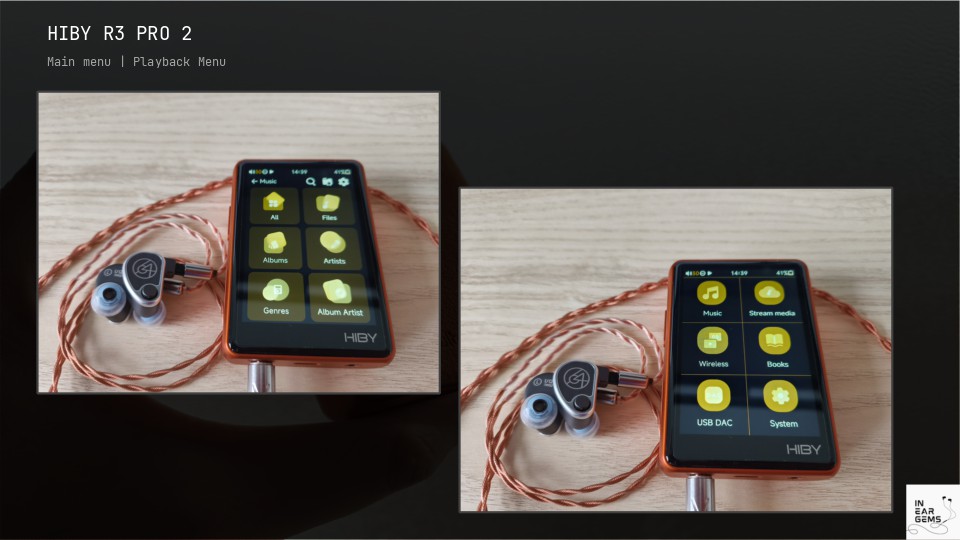
For most of my testing, I used it as a USB DAC for my Linux workstation during the work hours and play local files while commuting. You can choose to charge it while it’s plugged in. I didn’t. Why? Superstition: I didn’t want to overcharge the battery. The sound in USB DAC indistinguishable from the local audio playback. But here’s the rub: latency in USB DAC mode. It’s noticeable. Not terrible, but enough to make you twitch if you’re syncing audio with video. And yes, all DAPs I’ve tested so far, Android or Linux, have this same problem. It’s not unique. It’s disappointing that it’s still there on the R3 Pro 2.
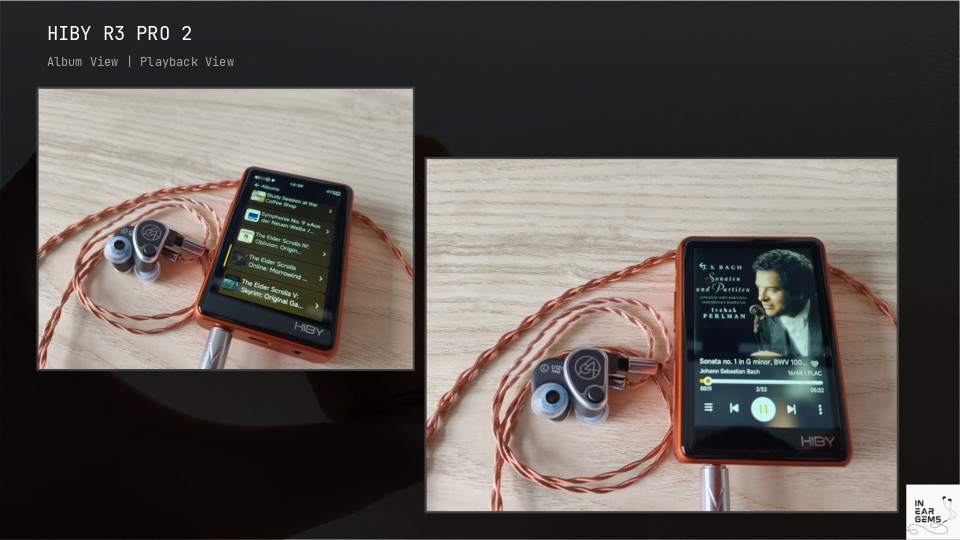
Now, the surprise: the (lack of) Bluetooth latency. This is where the R3 Pro 2 shines. I don’t know if it’s the X1600E, or the bluetooth implementation of HiBy, but it’s the first DAP in my collection that makes casual YouTube and movie watching tolerable over Bluetooth. It’s not perfect. But it’s tolerable. For the first time, I can say: “Yes, I can use this DAP for watching videos without wanting to scream.” That’s a win. If HiBy ever fixes the USB DAC latency, this thing would be a one-stop shop for every use cases requiring an audio source in your audio setup.
Battery: Before we dive into the software, let’s talk battery. HiBy stuffed it with a 4000mAh cell that is supposed to be good enough for 21+ hours of playback and 900 hours of standby. Now, 900 hours standby? That’s only possible if you turn the thing off. But the rest? Accurate. With my usage that includes all-day USB DAC mode, about an hour of offline playback, an hour of Bluetooth streaming, I’m getting at least four days of real-world use before needing a top-up. In fact, I charged so rarely that I can barely recall the last time I charge this device during my weeks of testing. When it’s time to charge, R3 Pro 2 is blazingly fast thanks to the PD2.0 fast charging. I generally just plug this device to my 100W laptop charger and go deal with other house chores and come back to a fully charged device, ready for another week.
Software features: Offline playback works—just not beautifully. Tap the “Music” button on the main menu, and you’re handed a six-option interface: All, Files, Albums, Artists, Genres, and Album Artist. The last one’s a long-sought-after feature in earlier versions, given by the number of questions I received after publishing reviews of DAPs based on the older HiBy OS.
At the top-right corner of that page sits a gear icon—your gateway to playback and DSP settings. It’s all mixed together here: gapless playback, repeat modes, folder-based playthroughs, plus HiBy’s signature MSEB EQ, a 10-band graphical EQ, and stereo expander plugin. DAC controls are also present—selectable low-pass filters, oversampling (OS) vs non-oversampling (NOS), and DSD handling options.
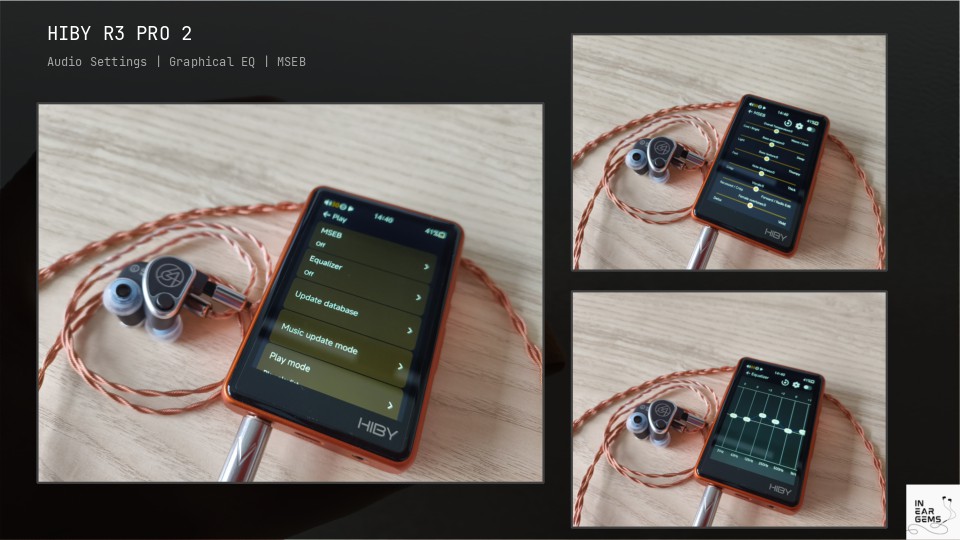
Feature-wise, it’s not bad. However, the interface could use better grouping. You’ll want to turn on gapless playback and automatically slide to the playback interface for smoother transitions; those two make a noticeable difference in real-world use.
There are occasional hiccups in daily uses. For example, album art might fail to load, or the song list won’t update when you skip tracks. These small glitches were mostly resolve after the first firmware update. Still, one nagging issue remains: no progressive JPEG support. Same SD card? On an Android DAP, your album art is full and crisp. On the R3 Pro 2, they are often missing, which is a shame as the album arts that actually show up looks quite lovely on the 3.3 inch screen.
On the plus side, R3 Pro 2 handles multi-CD albums far better than HiBy’s own mobile app does. For instance, I have a multi-CD album that HiBy Android App keeps displaying as multiple albums. Such problem does not exist in any version of HiBy OS. So, yeah, you win some, you lose some.
Sound tweaking options: Yes, it’s a HiBy DAP—so you’re going to find plenty of tools to shape the sound. Here’s what’s on offer:
-
MSEB: A parametric EQ with pre-set filters that lets you adjust the overall tonal character without needing to know exactly which frequencies drive certain feelings. You can dial in a range of effects—like shifting from cold and bright to warm and dark, adjusting bass depth (light or deep), changing mid-bass texture (fast or thumpy), tweaking note clarity (crisp or thick), placing vocals either recessed or forward, shaping female vocal overtones (“detox” or vivid), softening or sharpening sibilance across the spectrum, and controlling how much air and body you get in the upper treble (slow and musical vs fast and hard). It’s not precise engineering—it’s more about mood. And it works.
-
10-band graphical EQ: Runs from 31Hz to 16kHz. Standard stuff. Gives you fine control where you need it, but doesn’t go deep into psychoacoustic territory.
-
Soundfield: A simple stereo extender that widens the stereo image by pushing left and right channels further apart. It makes the soundstage feel artificially wider, but it’s not anything the speakervirtualisation plugin available on HiBy’s Android DAPs.
-
Gain: Two options—low or high. I did not hear much, if any, sonic difference this time, so I leave the DAP at low gain.
-
NOS (non-oversampling): A toggle between oversampling and non-oversampling modes. NOS is technically less ideal from a signal fidelity standpoint—it’s not the cleanest reconstruction—but some listeners find it more “relaxed” or “musical”. I find that NOS works better with hi-res files.
Now, here’s the reality: deeper DSP tools, like dynamic extenders and convolutional filters, are missing. This is likely due to the limitation of the processor on R3 Pro 2. And because the R3 Pro 2 uses off-the-shelf CS DACs instead of HiBy’s custom DARWIN circuits, fine-grained control over DAC performance isn’t available either.
Experience and Sound Quality
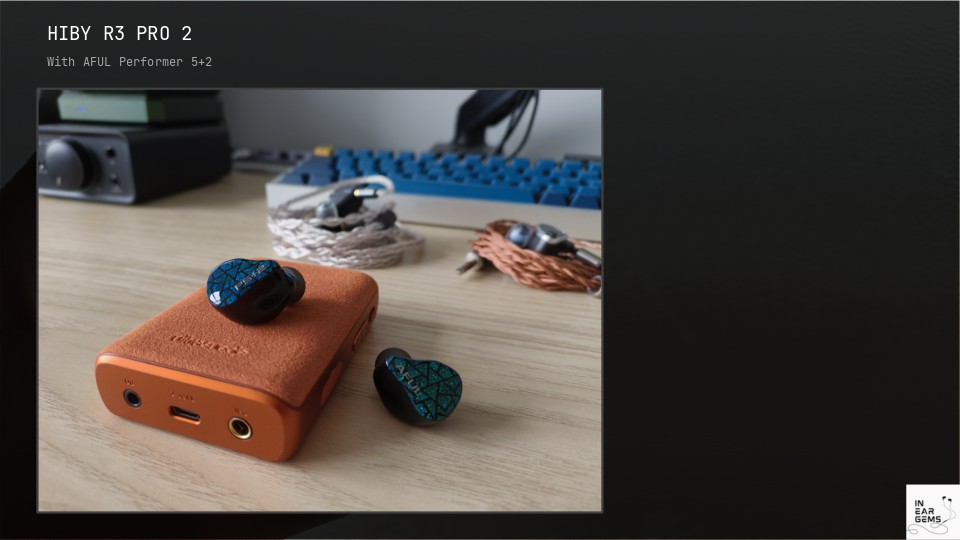
So, how does it feel to use this DAP? Well, I’ve been daily driving this DAP for many weeks before writing this review (probably many more weeks than HiBy ever expected). It’s not just a review unit; it’s now a cohabitant. A tiny, thicc cohabitant that insists on being in my pocket, my bag, and occasionally my dreams.
Day-to-day Usage Experience: Here’s how my day looks with the R3 Pro 2:
In the morning, I grab it from my desk, next to my phones, wallet, and notebook, before heading out. If I’m wearing a casual blazer, it slips neatly into the chest pocket. A real suit? It stays in the briefcase on top of the laptop. Honestly, its thickness does mess with the clean lines of a jacket. But for a scruffy blazer? Not an issue.
I might take it (the DAP, of course) out on public transport if I decide I want to listen to something. When I do, it’s a breeze: turn it on, pop in my wired IEMs, select a song, check volume, put the earpieces in my ears and slide the DAP back into the pocket. Buttons are tactile so I can control volume and playback without taking the DAP out of the pocket.
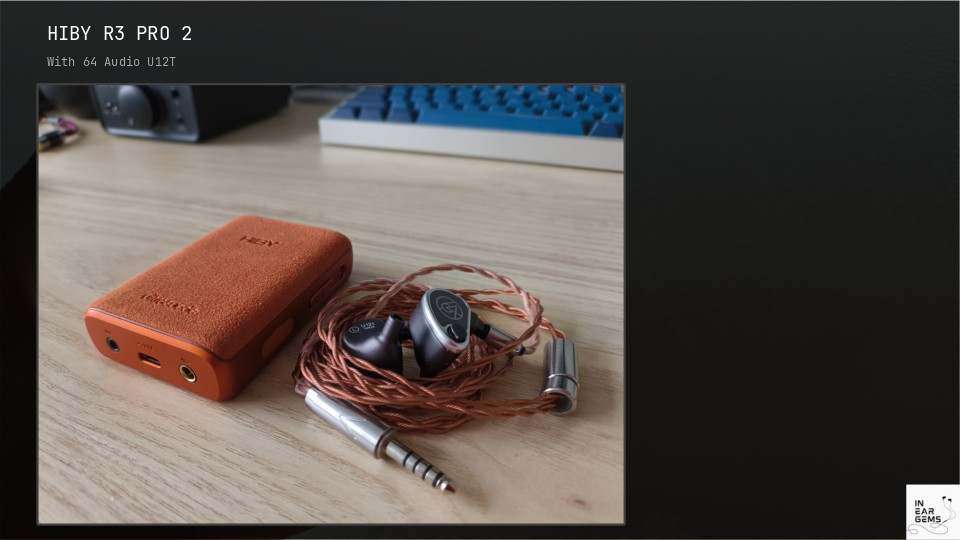
At the office, the first thing I do is to unpack my laptop, remove the DAP from my jacket, and connect it to the laptop with the laptop’s USB-C charging cable. It auto-turns on and docks as a USB storage device. Here’s where it gets slightly annoying: I need to manually switch out of storage mode, click into USB DAC mode, and choose “not charging” before R3 Pro 2 appears on the laptop as a USB-C DAC device. My Archlinux laptop detects the devices automatically with zero issue, so kudos to Hiby’s software engineers. I leave the DAP alone for the day and connect to wired IEM to it whenever I want to listen to something from my laptop. When I take a short walk, I just unplug the DAP and it reverts to local playback mode automatically.
Back home? I stash it where I found it in the morning. If needed, I plug it into my USB-C laptop charger to top it up.
At night, I might pick it up once more and pair it wirelessly to my phone. It remembers the connection, so every time I switch to Bluetooth DAC mode, it pairs automatically with the right codec (LDAC). No Wi-Fi streaming or file transfers in my daily use. I didn’t need them. But it’s there if you do.
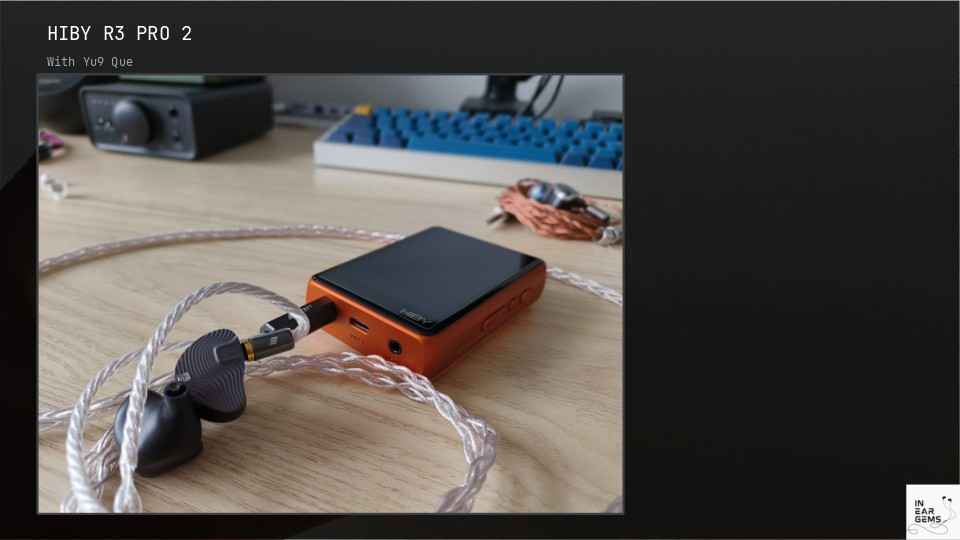
As you can see, R3 Pro 2 is quite versatile. Yet, it’s simple. Mostly invisible. This is where it differs from R6 Pro Max in daily use, to me. Listening to the big, expensive R6 Pro Max feels like you’ve lit a candle in a quiet room — a ritual. You pause. You sit. You make sure the chair is comfortable, the drink is chilled, and there’s no noise. It’s not just playback; it’s reverence. A moment of focus. Something you treat with respect, as if the music itself deserves your full attention.
The R3 Pro II? That’s different. It doesn’t demand ceremony. You don’t need a chair or a playlist named “Sacred Moments.” It slips into your day like a well-worn coat — useful, present, just there. No fuss. No candle. Just music in the background of commuting, cooking, or scrolling through your feed. It’s utilitarian. Casual. Part of the rhythm, not the highlight.
You don’t feel it as special — you just use it. And that’s fine too.
Sound quality: Of course, all this means nothing if the sound’s off. And honestly, we’re both audiophiles, we know that we care about music quality more than logic. I’m not stranger to our audiophile … quirks since I’ve carried the R6 Pro Max around like it was a Swiss Army knife for audio since late 2024. It’s heavy, bulky, but I don’t care because it sounds so good.
So here’s the moment: with the R3 Pro 2, I finally have the confidence to leave the R6 Pro Max at home.
That’s it. That’s my review of the R3 Pro 2 sound.
. . .
Just kidding! Let’s actually talk about sound. (I guess you’ve been waiting for this since paragraph one.)
A quick detour about DAP’s sound quality: Before we move on, let’s have one quick detour to talk about DAP’s sound quality. It’s hard to hear what a DAP does because it’s not the star of the show. The DAP is the stage, the frame — your baseline when listening through IEMs. If an IEM sounds muddy to piercing, do you blame the earpiece or the source device? That’s the problem: we can’t judge DAP sound on its own without comparing it across multiple IEMs and long-term use to extract that invariant factor.
So what makes a good DAP objectively? It should reconstruct and amplify audio faithfully — with minimal noise, distortion, and lightning-fast response to transients. Most modern DAPs meet these benchmarks in specs: clean measurements, near-zero noise floors, distortion well below the threshold of human hearing. But that doesn’t always translate into sound. You’ll still hear differences, despite a superficial glance at the spec sheet saying otherwise. Thus, as usual with personal audio, we need to venture into the cloudy world of subjectivity.
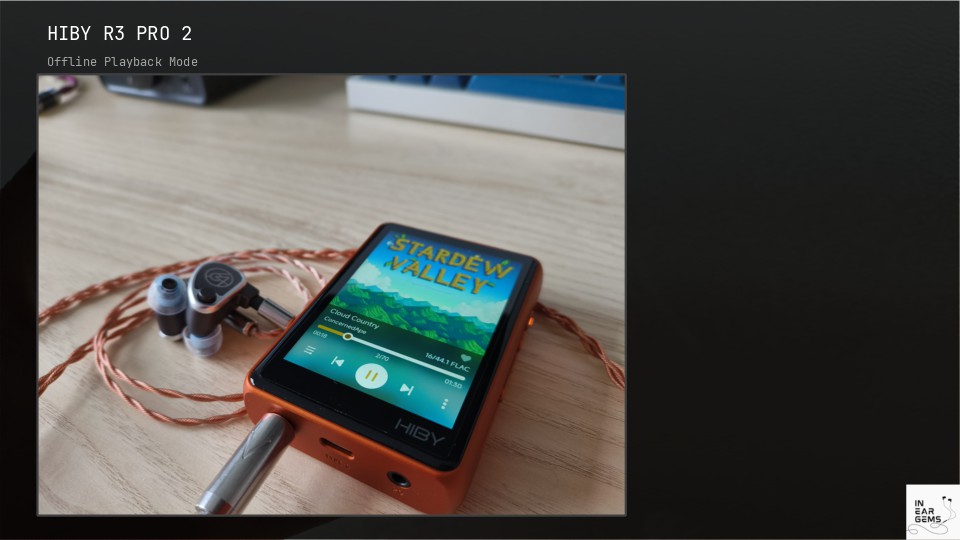
To me, a good DAP is resolving, dynamic, and spacious. All of which, I believe, are proxies for and reflection of objective engineering excellence.
Resolving means you can hear the quietest details — breaths between notes, reed vibrations, a finger tap on a string — all the way down into silence. A good DAP doesn’t just fade out; it sustains clarity. When the volume drops, when the notes fade out, that’s where the difference in resolution between DAPs speaks louder.
Dynamic means it can handle volume swings with accuracy and punch. Not loud all the time or quiet all the time — but capable of going from silence to thunderclap in a single note. Some DAPs sound compressed, like music is being squeezed into a cardboard box. Others lack excitement — even with strong IEMs and powerful tracks, they just don’t slam. That’s not dynamic.
Spacious means it helps your IEM recreate the spatial cues in recordings — instruments spread out, not clustered together in your head. Some DAPs make everything feel close, muddled, like a band playing in a cramped room. A spacious one opens up the mix: instruments seem to pop from empty space. That comes down to three things:
- Excellent treble extension — so high frequencies stay sharp and clear;
- Tidy, snappy transients — keeping everything defined and separated;
- A pitch-black background — giving the impression that sound emerges from nothing.
And here’s a final note on synergy: most DAPs are neutral in tone, but some shift the colour of your IEMs noticeably — making them brighter, darker, warmer or colder. Small bumps in frequency response can change how an IEM feels entirely. This is where pairing matters. A bright, edgy IEM might thrive with a warm, gummy DAP, while a warm and gummy IEM could shine under a crisp, clean signal. But synergy is subjective — and I don’t evaluate DAPs on it. I just observe what happens when the two work together.
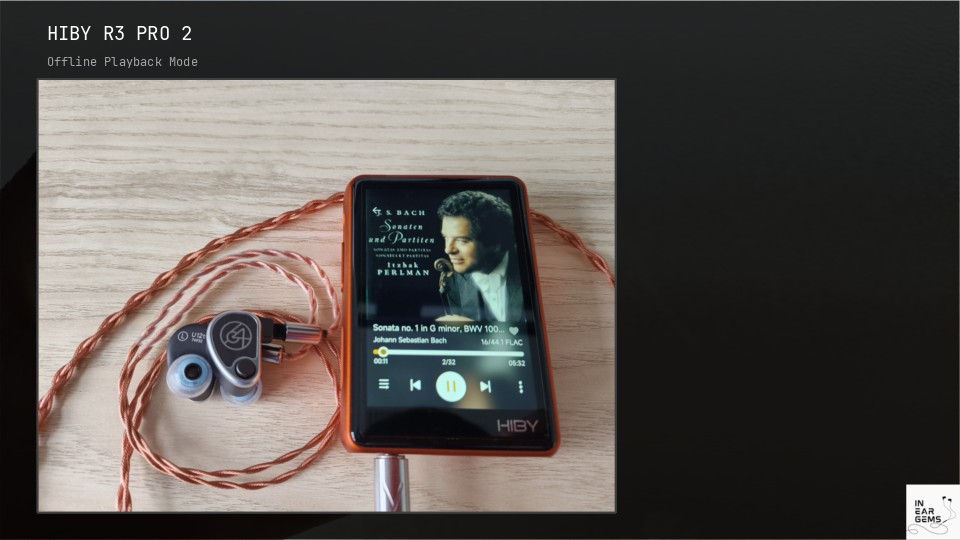
Sound quality: Simply put, the R3 Pro 2 is a surprisingly — if not shockingly — competent DAP when it comes to sound quality. Give it an IEM that can deliver rich space and dynamic range, and it’ll bring out those qualities with near-equal confidence to my R6 Pro Max.
Take Bach’s Violin Partitas by Itzhak Perlman — the 1988 recordings, on Yu9 Que IEMs. The soundstage is breathtaking: the violin seems to spill beyond the head into the empty street as I walk home at night. That sense of spatial expansion isn’t just wide — it feels real, immersive. Old recordings like this are notoriously tough for micro DAPs and even mid-tier gear to get right. Most devices only stretch the stage sideways; they don’t project it into the environment. The flagship DAPs A&K SP2000 and iBasso DX300 were some of the first DAP I heard that showed me the possible staging information that I missed. Now, micro DAPs like the R3 Pro 2 can do it too.
To be fair, micro DAPs have been improving in staging. The older R3II already had a noticeable upgrade over its predecessor in projecting space from IEMs. The R3 Pro 2 builds on that, but not by much. Given how well the R3II already performed, this is a modest step up — still, it puts the R3 Pro 2 firmly in the same league as bigger beasts like the R6 Pro Max or the DX300.
Same album, same IEM: resolution is where the R3 Pro 2 really stands out. Compared to fancy quad-DAC topologies or fully discrete designs from flagship DAPs, the dual CS DAC chips inside R3 Pro 2 seem rather … quaint. Yet, this does not stop R3 Pro 2 from digging below the surface-level details. This DAP is fully capable of revealing subtle textures: the tap of a finger on a stringboard, the faint vibration of a bow grazing the wood, that sharp crunch when the bow bites, slight reverb, small details on the side-channel. All this lives in a pitch-black background — stable even with ultra-sensitive IEMs like the Campfire Audio Andromeda 2020. Notes emerge from silence like they’re popping out of thin air. The only exception? When connected to a noisy USB-C port on my laptop or desktop — then, the background hiss and buzz can be heard.
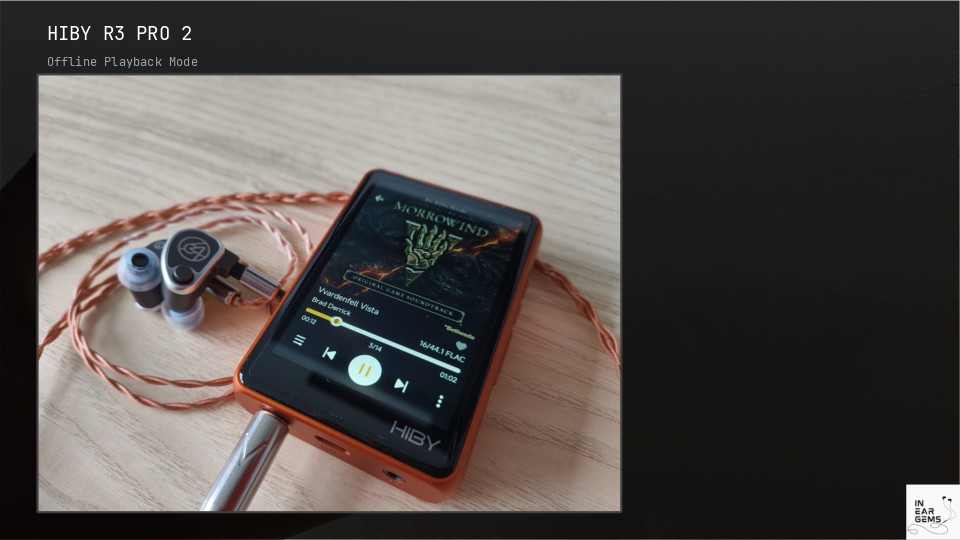
Dynamics are where R3 Pro 2 gets curious. Yes, it can slam. Hand an epic orchestral piece and a dynamic IEM, and you get a proper thunderclap. In fact, in this regard, the R3 Pro 2 outperforms my ex-flagship DX300 — which is surprising given how much more expensive and complex that device was.
But it’s also soft in the upper mids and treble. Pair it with a sharp, energetic IEM like the Effect Audio Gaea, and suddenly the edges get tamed. It doesn’t just smooth them; it actively reduces their bite. The effect is consistent across multiple IEMs. And yes, I tested with no EQ, no DSP, and no NOS mode. It’s just how this DAP was tuned. That softness is the key difference between the R3 Pro 2 and the R6 Pro Max in my experience. I wouldn’t say it’s a pro or con.
In short, this is an extremely capable DAP that can mostly match big players in performance — especially when paired with dynamic IEMs. I suspect HiBy took inspiration from the R6 Pro Max’s amplification circuitry and applied it here, creating a compact powerhouse. A little pocket rocket.
(And just for completeness: I did test it with the notoriously fussy Final Audio E5000. It drives it cleanly — no gain needed. But the result is unpleasant. The E5000 is already soft and sluggish in the treble, so R3 Pro 2’s taming makes it even more lifeless. On the flip side, bass remains fully expressive and under control — which I found too much for my ears.)
Concluding Remarks
I’ve always believed there’s an inefficiency in how portable DACs and amps are designed — especially for IEMs. It makes no sense that devices drawing only a few milliwatts need hundreds of milliwatts of output just to sound spacious or dynamic (that audiophile phrase, scaling).
HiBy seems to be solving this quietly, step by step. With the R3II and now the R3 Pro 2, they’re closing the gap between micro DAPs and full-sized players, through engineering efforts. The result? A tiny device that delivers sound quality I once thought only big gear could deliver.
R3 Pro 2 is impressive in more ways than one. It’s versatile, reliable, and feels genuinely pleasant to use — like a well-worn tool you reach for without thinking. More importantly, it gives me the confidence to leave my R6 Pro Max at home.
If you’re hunting for a micro-DAP, there are not many options out there. I’ve tested every HiBy R3 model so far, and none come close to R3 Pro 2. The R4? It’s a full Android device with more features, but it’s much larger and, frankly, I still think R3 Pro 2 sound better.
Final verdict? Recommendation without reservation.
What I like:
- Sonically confident performance, matching big DAPs in resolution, staging, and dynamic range
- Tactile, satisfying build with a bold design that feels intentional
- Excellent Bluetooth latency — making video playback tolerable
- Clean, stable pitch-black background even with ultra-sensitive IEMs
- Versatility: works as local player, USB DAC, streaming device, and wireless DAC/amp
What could be improved:
- Fix USB DAC latency — it’s noticeable and undermines its utility in synced audio scenarios
- Add progressive JPEG support for better album art rendering on microSD cards
- Consider a more refined interface grouping to reduce confusion during daily use (e.g., gapless playback, auto-slide)
